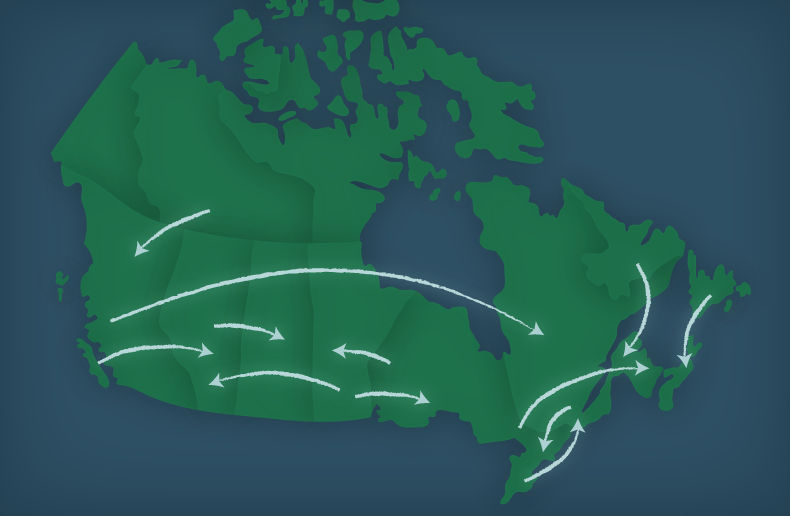Young Canadians may not have the money-management skills they need to navigate the world after high school. A September survey by the Investor Education Fund, a non-profit organization founded by the Ontario Securities Commission that promotes financial education for consumers, found that only four in 10 high-school students thought they were “somewhat prepared” or “very prepared” to manage their finances after high school, and only about a quarter said their school provided them with most or all the financial information they need.This could be a golden opportunity for financial advisors to strengthen client relationships by helping clients’ children learn about finance and investing.
“Kids may not be learning age-appropriate money-management skills at school,” said Daniel Collison, regional director of Investors Group in Markham, Ont. “And even financially savvy parents often don’t take the time to talk about finances with their children. They buy things for their kids and miss out on the opportunity to teach them about saving for short-term goals.”
When appropriate, he reaches out to clients’ children. He worked with a couple whose son was a child actor and made more money in a year than many adults. “The boy opened an RRSP at age 12,” Mr. Collison said. “He also had non-registered investments as there were no tax-free savings accounts at the time. He was amazing, he touched very little of his money. And he’s still a client today—he’s just finished university.”
Financial habits
Scott Gerlitz, a financial advisor with Edward Jones in Calgary, also works with clients’ children. “Clients are putting a greater emphasis on leaving their children not just a legacy of wealth but also a legacy of good financial habits. With this in mind, parents are sending their kids to me.”
He started working with the 16-year-old son of a client a few years ago. “Sixteen is a good age to start investing,” he said. “If you can learn to drive a car at 16, you can learn to drive your financial life as well.”
His first meeting with the youth focused on a discussion of the time-value of money. “Time is critical,” Mr. Gerlitz said. “The longer the money is in the investment, the less you have to take out of your pocket.”
One of the 30 recommendations tabled by the federal Task Force on Financial Literacy in December 2010 was for financial services providers to deliver educational information at “teachable moments.” Teachable moments, Mr. Collison noted, are situations and events that really resonate with consumers and provide an opportunity to discuss how this can have a financial impact on the individual. “Cars resonate with boys,” he said. “You can talk about the implications of buying a car outright compared with financing the purchase with a loan or leasing a vehicle. Or waiting until the young person has saved enough money for it.”
When Mr. Gerlitz’s young client started his first part-time job, he talked to him about money management: dividing his earnings into savings, spending, donating and investing. “This gets young people into the habit of managing money. Parents may want to offer to match what their kids put away as savings.”
Mr. Collison encourages clients to let their children know the family’s financial situation. He also encourages them to have the children sit in on family financial planning sessions. “The kids who do, learn about the parents’ tax situations and their investments, and they come to appreciate what their parents are doing for them,” he said. “But this is rare. Most people still have a secretive attitude toward their finances.”
“Most clients don’t want their children to know the actual figures,” said Jakob Nemec, a financial planner with Bank of Montreal in Victoria, B.C., “although some will let a child know how much money is in his or her registered education savings plan. But I had one client who said that if his son knew how much was in his RESP it might deter him from working towards a scholarship.”
Mr. Collison does a considerable amount of pro bono work with clients’ children, and believes that it pays off. “It makes good business sense because I’m taking care of future business. These young people are my future clients. They’ll also be the beneficiaries of their parents’ estates.”
But he also encourages clients to do their part in honing their children’s money-management skills. “There are so many opportunities for parents to do this,” he said. “They can take young children shopping and show them what their allowance money can buy. They can look over restaurant bills with the kids and see how much tax has been charged, and then decide how much of a tip to leave.”
Short-term goals
Children and teenagers have difficulty focusing on long-term goals, such as retirement and perhaps even saving for a university education, Mr. Collison noted. “So have them set short-term goals. Have them save money from their allowances or part-time jobs for that $100 hockey stick or new laptop. Virtually every purchase can be approached in this way. Parents may also want to lend children money for the purchase and have them pay it pack within a certain amount of time and perhaps even with interest. Or they can encourage delaying gratification until a young person has saved the money to buy the item he wants.”
As soon as a child starts earning income from a part-time job and receives a T4 slip, the parent should see that he or she files his first income tax return, said Evan Hickey, a financial planner with RBC Financial Planning in Halifax. “This will allow him to start building up RRSP contribution room even though he may not be able to contribute to the plan that year. And it is never too early to do a tax return with a young person.”
Mr. Gerlitz noted three things that can have a huge impact on a young person’s financial future:
- Saving. “Even very young children need to start putting money away for short- and long-term goals,” he said. “My eight-year-old son puts his allowance into a piggy bank with four components: saving, spending, donating and investing.”
- Establishing an emergency fund. “Ask a young person what he would do if an emergency came up, such as if he broke his iPad. ‘Would you buy another iPad by borrowing money from your parents or would you wait until you had saved enough money for the purchase? But if you had an emergency fund, that might cover it.’ For adults,” Mr. Gerlitz added, “emergency funds can be extremely important. Long-term plans can be kiboshed by short-term needs.”
- Understanding debt. “Given how easy it is to get credit today, it’s important to know the cost of debt and how to manage debt,” Mr. Gerlitz said. “Kids are getting credit cards – with 29% interest – before they open investment accounts, and it should be the other way around.”
-







